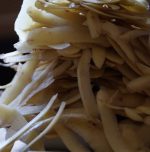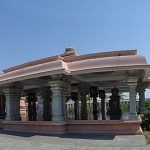Nanoparticle Fertilizer created by Indian origin scientists

A new type of fertilizer made by two Indian origin scientists can revolutionize farming. Ramesh Raliya and Pratim Biswas who work at the Washington University in St Louis have made an innovation in nanoparticles.
They technology is using nanoparticles in fertilizers. This technique is improving output without adding further strain on existing natural resources. Their fertilizers are also said to be more eco-friendly than traditional ones.
Farmers use fertilizers to give plant required nutrients. According to studies, only 42 percent of the phosphorous from fertilizers is absorbed by the plants. This means a major part of it goes to waste.
A surprising fact is that about 85 percent of world’s total mined phosphorus is being used as fertilizer by farmers. This can cause the supply of phosphorus to run out in the next 80 years.
The new innovation from Raliya and Biswas revolutionizes fertilizer for agriculturalists around the world. They created zinc oxide nanoparticles from a fungus around the plant’s root. Zinc is an essential nutrient for plants. It helps in breaking down phosphorus from a complex form to something that can be easily absorbed by plants.
The new zinc Nano-fertilizer can be applied directly on the leaves of the plants. They are absorbed with better efficiency. As a result, wastage and pollution are reduced.
After testing the new fertilizer on mung bean (green gram) plants, the two scientists found promising results. The results found that phosphorus was absorbed by plants 11 more efficiently. The activity of enzymes which react with the zinc also increased from 84% to 108%. In a total, this new fertilizer resulted in a 27% increase in biomass and a 6% increase in quantity of beans produced.
The Nano-particles can also be modified for different conditions. The scientists said that these particles have unique physical, chemical and structural features that can be fine-tuned with engineering.
Photo by Henry Be on Unsplash (Free for Commercial Use)
Image Reference: https://unsplash.com/photos/JR8XZ-gdZrA










Leave a Reply